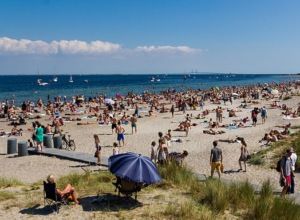News
Drowning fatalities in Denmark approaching record levels
This article is more than 7 years old.
The long hot summer has inevitably caused people to rush to the beach for a cool dip, but there have been some extremely unfortunate side-effects

It may look idyllic but men need to be better at recognising their limitations when they take a dip (photo: Thomas Rousing)
As well as being remembered for being a record summer in terms of sunshine and temperatures, 2018 may go down in the history books for something much more tragic: a record number of deaths by drowning.
So far this year, 39 people have drowned in Danish waters, with only five being revived. And this is the same number who drowned over the whole of last year, Sven Hedegaard, the chair of the Danish council for greater water safety, Rådet for Større Badesikkerhed, told Kristeligt Dagblad.
“It is tragic that so many people have already drowned this year. It is quite simply a result of the fact that the good weather has attracted so many people to the water,” said Hedegaard.
A preponderance of men
One aspect of the fatalities particularly stands out: most were over 40 and male. Out of the 39 people who drowned, 31 were men. Middle-aged men seem to be the most vulnerable, with 29 of the victims being over 40.
READ ALSO: Fewer children drowning at Danish beaches
“They are reckless and don’t want to acknowledge the physical limitations that are a part of getting older,” said Hedegaard.
“It’s not because men are poorer swimmers than women, but they are more likely to swim further out. Overall, men don’t give enough thought to how dangerous the sea can be,” he added.






































